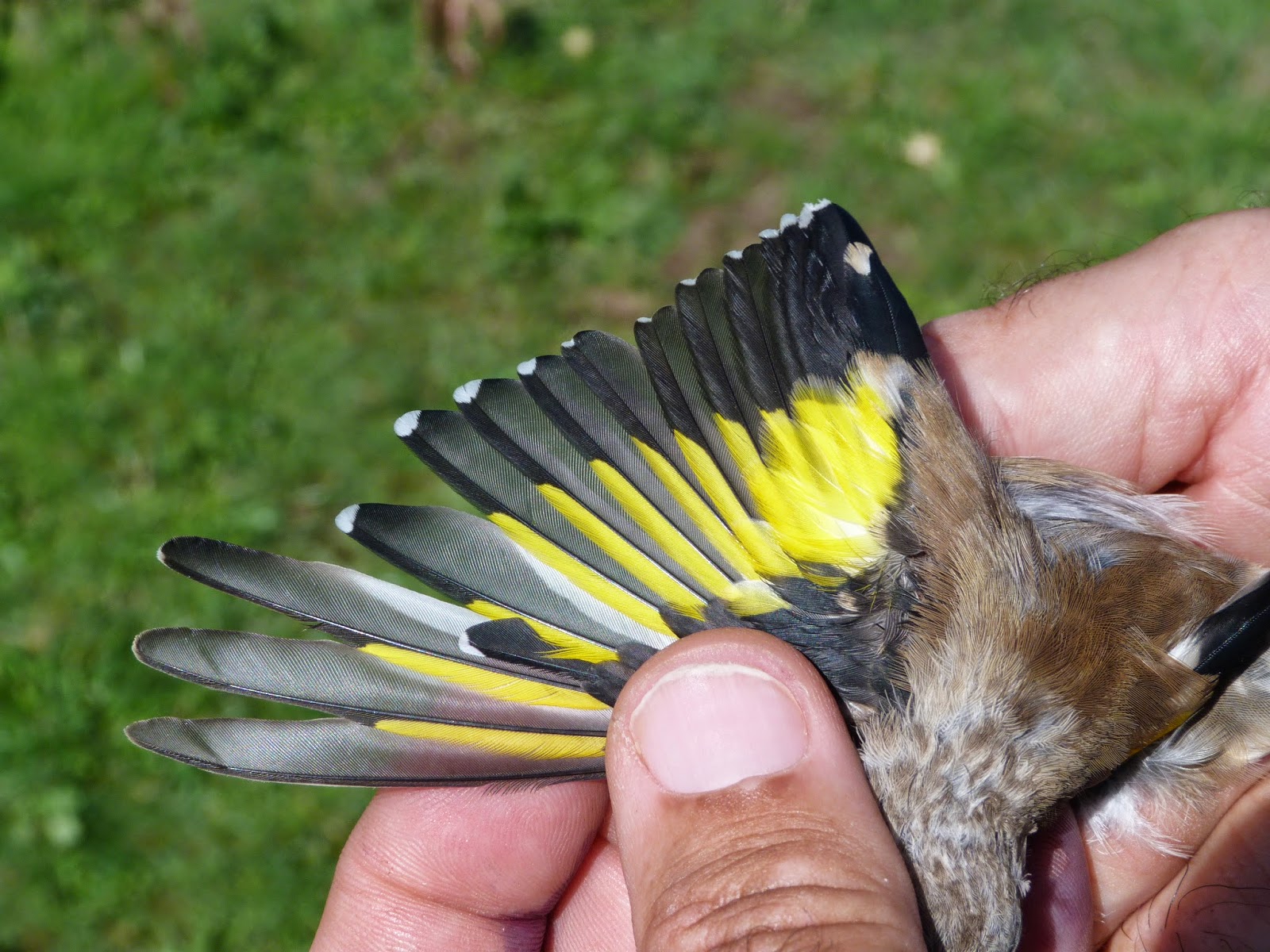We put up 5 doubles and a further two singles to target mainly Blackcaps, Garden Warblers and Whitethroats as they feed up before heading south. The first round brought a new bird, in the form of a Lesser Whitethroat, for JB along with lots of the warbler species anticipated.
Lesser Whitethroat 3
The stream of birds was constant and didn't begin to slow until after 10am. The most numberous species caught is now Blackcap as the Whitethroat numbers are starting to tail off a little.
There are no other photographs, with the exception of the Goldfinch below, as there wasn't much down time between ringing, extracting and scribing.This individual was busily changing its tail and flight feathers, although a juvenile head pattern is retained at present.
3M Goldfinch
Primary moult 5555530000
Changing its tail
By 11.30am we had started to draw in and completed the session around midday. We all appreciate the 100+ new bird days (particularly at inland sites) and this was JB's first and a fantastic introduction to the Wraysbury site. As always thanks to the team for your help, and best wishes to JB for your studies and continuing ringing development in the west country.
Wren -1
Robin -3 (2)
Dunnock -7 (4)
Blackbird - 1
Songthrush - 3
Lesser Whitethroat - 1
Whitethroat - 8
Garden Warbler - 12 (2)
Blackcap - 39 (2)
Reed Warbler - 3
Willow Warbler -5
Chiff-chaff - 2
Blue Tit -3 (1)
Great Tit - 1
Long-tailed Tit - 5
Goldfinch - 8 (1)
Blackbird - 1
Songthrush - 3
Lesser Whitethroat - 1
Whitethroat - 8
Garden Warbler - 12 (2)
Blackcap - 39 (2)
Reed Warbler - 3
Willow Warbler -5
Chiff-chaff - 2
Blue Tit -3 (1)
Great Tit - 1
Long-tailed Tit - 5
Goldfinch - 8 (1)




